I have lived in Groningen for over a decade. Therefore, I have seen Groningen’s highlights and know which ones are worthy of your time and attention.
I have lived in Groningen for over a decade
I have also asked many friends who still live in Groningen about their favorite highlights to select the 12 best tourist attractions in Groningen for you.
What To Do In Groningen
I arranged these highlights in a tour around the city center of Groningen. In addition, I created an easy-to-use interactive map of Groningen to help you find Groningen’s highlights locations easily.
Map Of Things To Do In Groningen
What To Do In Groningen?
1. Admire The Beautiful Train Station
The central train station in Groningen is beautiful from the outside but breathtaking from the inside. The present building was built at the end of the 19th century. The exterior of this building is a very tasteful combination of neo-gothic and neo-renaissance architectural elements.
However, the Groningen train station’s breathtaking interior makes this train station the most beautiful station in the country. The Groningen train station’s main hall, particularly its ceiling, makes this building unique.
Most people who enter this hall will stop and stare at the ceiling with the Groninger artist’s impressive tile pictures, F.H. Bach.
Even if you have not come to Groningen by train, do yourself a favor and walk inside this train station to look upside, and enjoy this stunning ceiling.
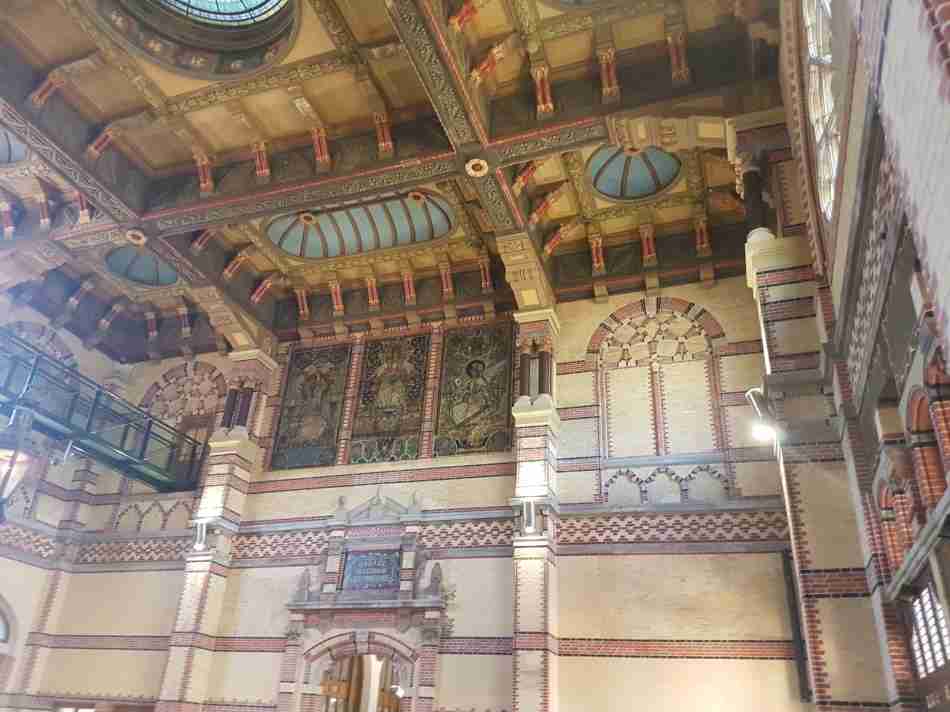
2. Explore The Groninger Museum
The Groninger Museum is unique because the building is already a work of art. In addition, the museum lies next to the train station, and the post-modern museum building starkly contrasts the train station’s classical architecture.
If you visit Groningen, you cannot avoid the Groninger Museum since most visitors will arrive by train. I strongly advise you to travel to all city centers by train to avoid high parking costs in the Netherlands’ city centers.
Walking from the train station towards the city center, you will cross the colorful museum bridge (a work of art in itself) and pass by the museum entrance, built in the middle of the canal surrounding the city.
This post-modern architecture and bridge provide a modern touch to Groningen, a city with many historic buildings. The museum is an excellent example that Groningen’s development and progression have not stopped.
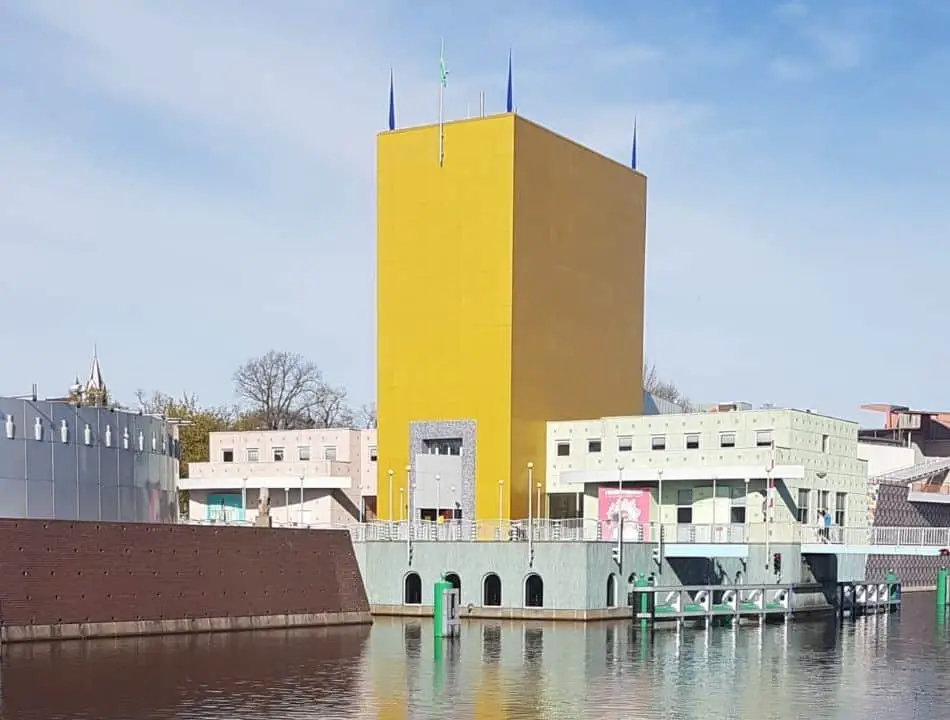
3. Go Shopping In The Folkingestraat
You walk through the Folkingestraat, a trendy and charming shopping street from the Groninger Museum towards the city center. It is so lovely that it is considered the best shopping street in The Netherlands.
The Folkingestraat is a different type of shopping street, and perhaps the best example of what ‘different’ means is Ariola, a shop with Italian food. Ariola has been selected as the best shop in the Netherlands twice. In Ariola, you can buy lasagna, stuffed zucchini, and tapenade: Italian delicacies and everything homemade in their open kitchen.

4. Discover The Vismarkt And Korenbeurs
The Folkingestraat ends at the Vismarkt (Fish Market square), a typical Dutch market square surrounded by historical Dutch houses, now used as shops and restaurants.
Since the 15th century, the Vismarkt has been where fish was traded and sold to the public. Nowadays, you can go here for much more: on Tuesdays, Fridays, and Saturdays, the market square is full of stalls with fish, meat, bread, vegetables, and fruit. Fill your bag with apples and cauliflower for a low price. Or store exotic herbs and forgotten vegetables.
On the west side of the Vismarkt, you will see a beautiful neoclassical building called the Korenbeurs. The Korenbeurs used to be an exchange for trading grain.
The market hall behind the facade consists of an enormous iron cast construction with lots of glass. All that glass provides much light, a prerequisite to accurately judging grain. Nowadays, a supermarket is located in the Korenbeurs, so you can still go inside and look around yourself.
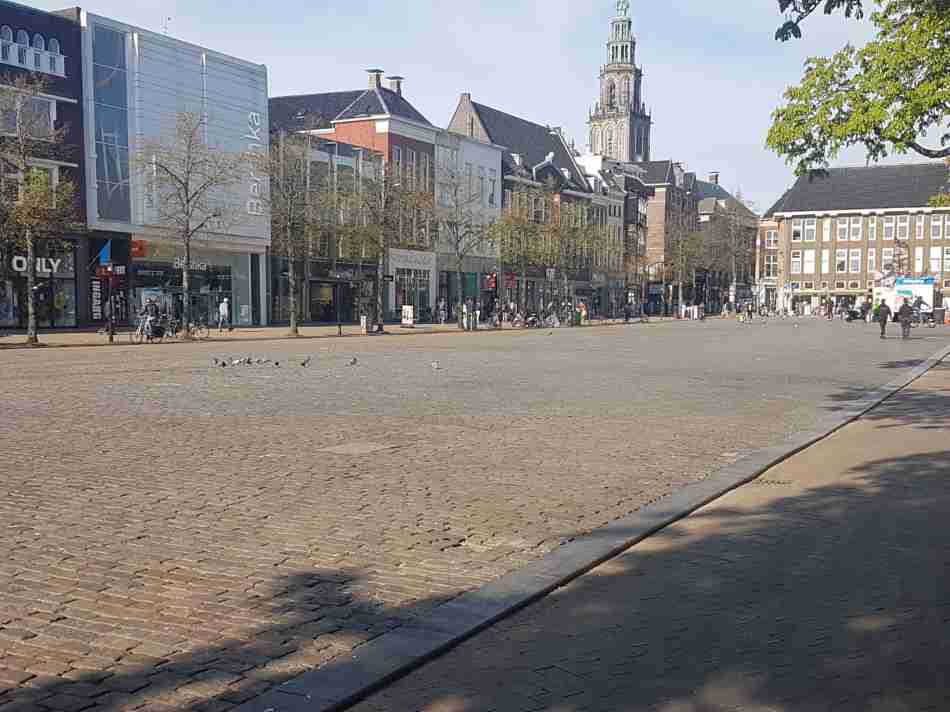
5. Explore The Northern Maritime Museum
Two historic fifteenth-century buildings on the Brugstraat, the Gothic House and the Canter House, are the Northern Maritime Museum’s fantastic locations.
The history of shipbuilding in the North of The Netherlands and shipping from the Middle Ages to the present day comes to life. Also, there are various annual exhibitions with themes from maritime history.
6. Make Great Pictures In Groningen
You will find the Hoge der A and Lage der A quays of Groningen’s old harbor around the maritime museum’s corner. The old warehouses along the quays reveal the bustle of the past. No less than 28 national and 11 municipal monuments are along these quays.
It feels like stepping into a painting. You can take the best photos in Groningen standing on one of two bridges: the Visserbrug or the A-brug. The Visserbrug is my personal favorite to make pictures in Groningen.
Groningen used to connect with the sea directly, but those days are long gone. Nowadays, several bars and cafes with charming terraces are located along these quays. When it rains, you can sit inside, admiring the view of the moored ships.
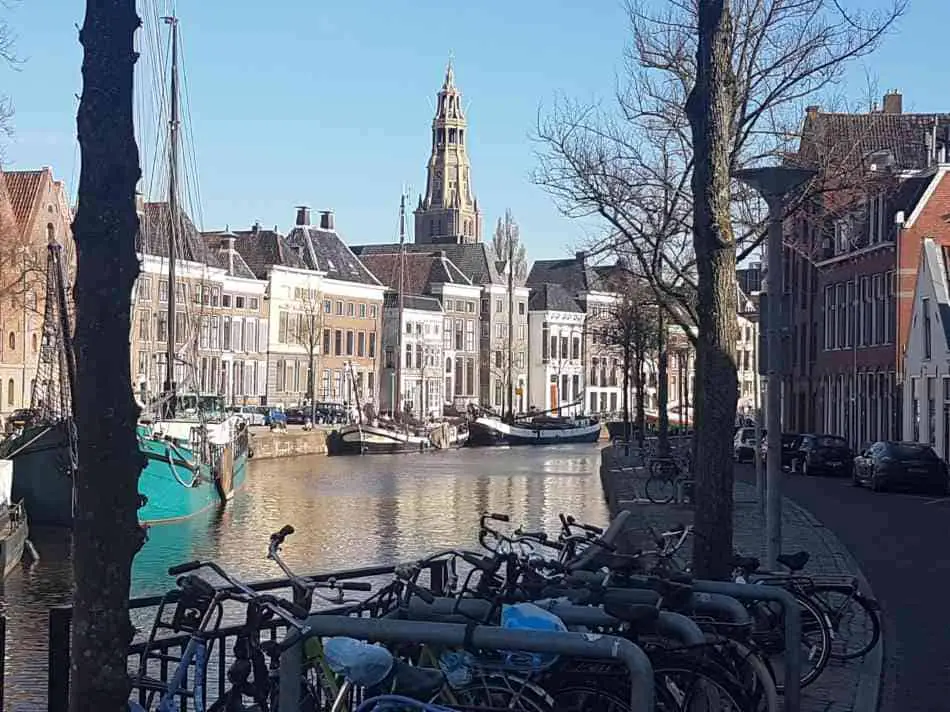
7. Admire The University Groningen
Groningen is young. But where do you experience that youthful energy? Find a spot among the hundreds of bikes on the Academieplein and look around you.
This square on the Broerstraat between the Oude Boteringestraat and the Oude Kijk in ‘t Jatstraat is the epicenter of the student city of Groningen.
On one side is the University Library, where hundreds of students spend the whole day studying. On the other hand, you can find the impressive neo-Renaissance style Academy Building.
In addition, you will find dozens of bars and restaurants around, making this area an active and enjoyable part of the city.
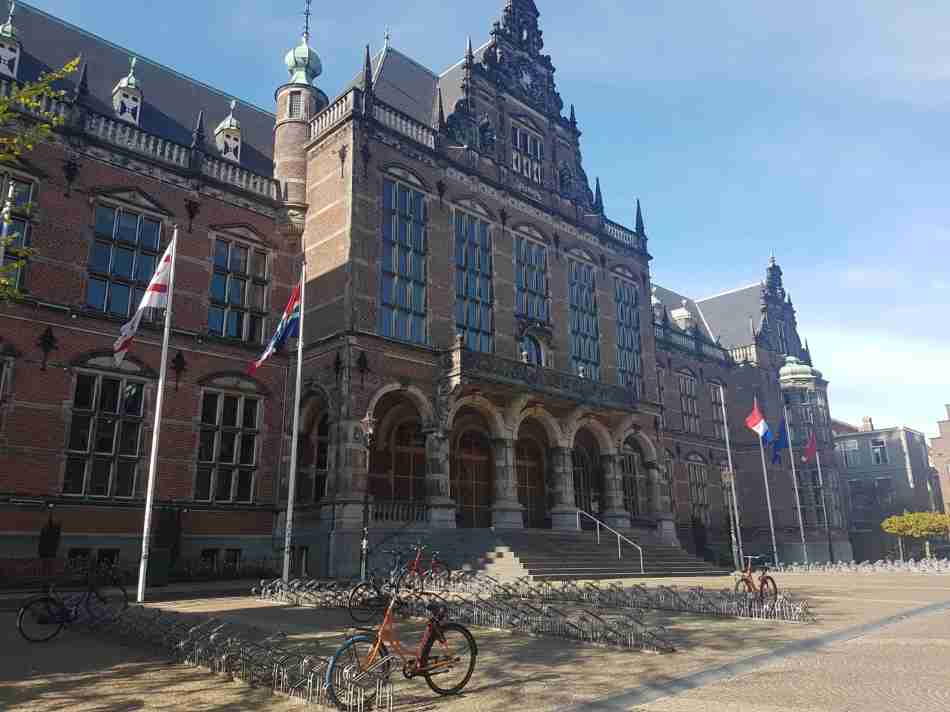
8. Visit The Almshouses
Hofjes is the Dutch word for almshouses, blocks of tiny houses with a shared courtyard in the middle. These almshouses were built to offer free housing for the poor, widows, and the sick.
Nowadays, everybody can live in these oases of peace in the city center. Walking into some of these almshouses, enjoying a peaceful moment of silence is possible.
Almshouses are not typical of Groningen. You will find them in many Dutch cities. However, what is unique in Groningen is that there are still many almshouses in the city center.
The houses around the yard ensure it is quieter in courtyards than outside. You can get a city walk map at the Tourist Information Office to see most of these almshouses in the center of Groningen.
9. Relax in The Garden Of Princes
Another quiet place in the city’s center, perhaps the most tranquil spot of the city center, is the Prinsentuin, the Princes’ Garden. This garden is located behind Prinsenhof, the residence of the Princes of Nassau when they were in Groningen (not very often).
Prince William Frederik of Nassau and his wife Albertine Agnes had the garden laid out in the 17th century. The rose garden, herb garden, and beautiful foliage corridors give a unique picture of how the princes and their families spent an afternoon in the sun.
10. Enjoy Forum, The New Cultural Center
Forum has become the new cultural center of Groningen, and opinions are sharply divided on whether it is a beautiful or ugly building. However, whatever your opinion about the outside of the Forum building is, everyone seems to agree that the outside makes one ‘curious’ about the inside.
Inside, you will find talk shows, lectures, debates, films, documentaries, courses, workshops, festivals, parties, exhibitions, cafés, restaurants, workspaces, meeting rooms, interactive installations, the city library, and the highest roof terrace in Groningen with phenomenal views.
So a visit to the Forum is worth it even if you only go for the roof terrace and its city views.
You may want to go to the Forum’s parking garage if you have time. Here, you will find the impressive work of art ‘Wervel,’ a 20-meter-long LED sculpture. Very different from what you have seen before and worth a few minutes of your time.
11. Relax on The Grote Markt
The Grote Markt is the market square in the center and the heart of Groningen. Two of the city’s most prominent buildings, the Martinitoren, and the city hall, are located at the Grote Markt and face each other from both sides of the cobbled square.
You can find plenty of terraces at the Grote Markt in the summertime, making it a lively and fun place to relax while contemplating what you may want to see or do next in Groningen.
In addition, there are markets organized on the Grote Markt on Tuesdays, Thursdays, and Saturdays.
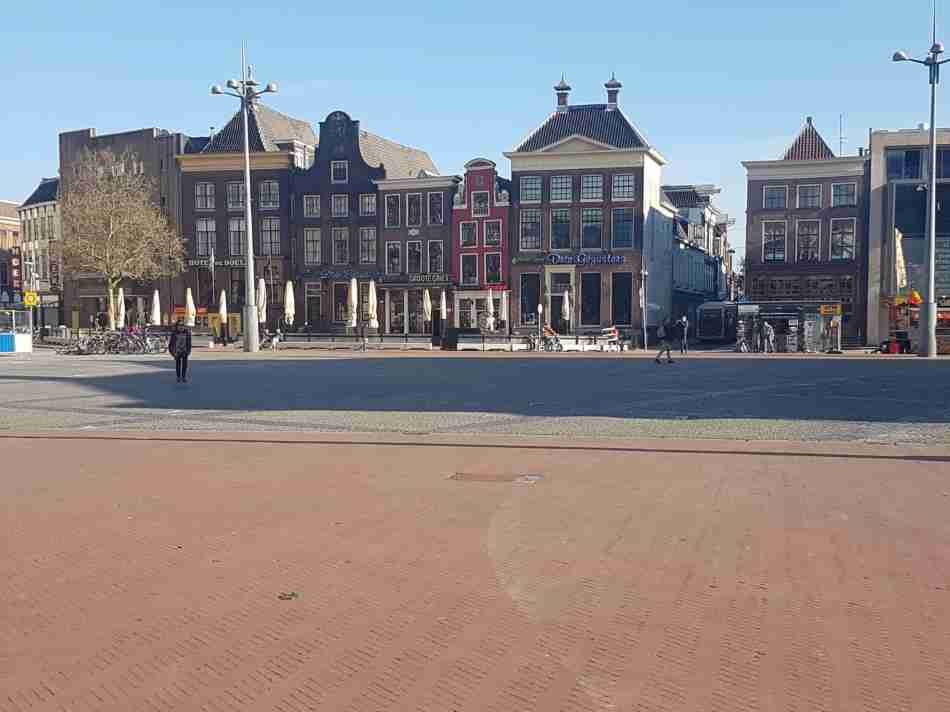
12. Climb The Martinitoren
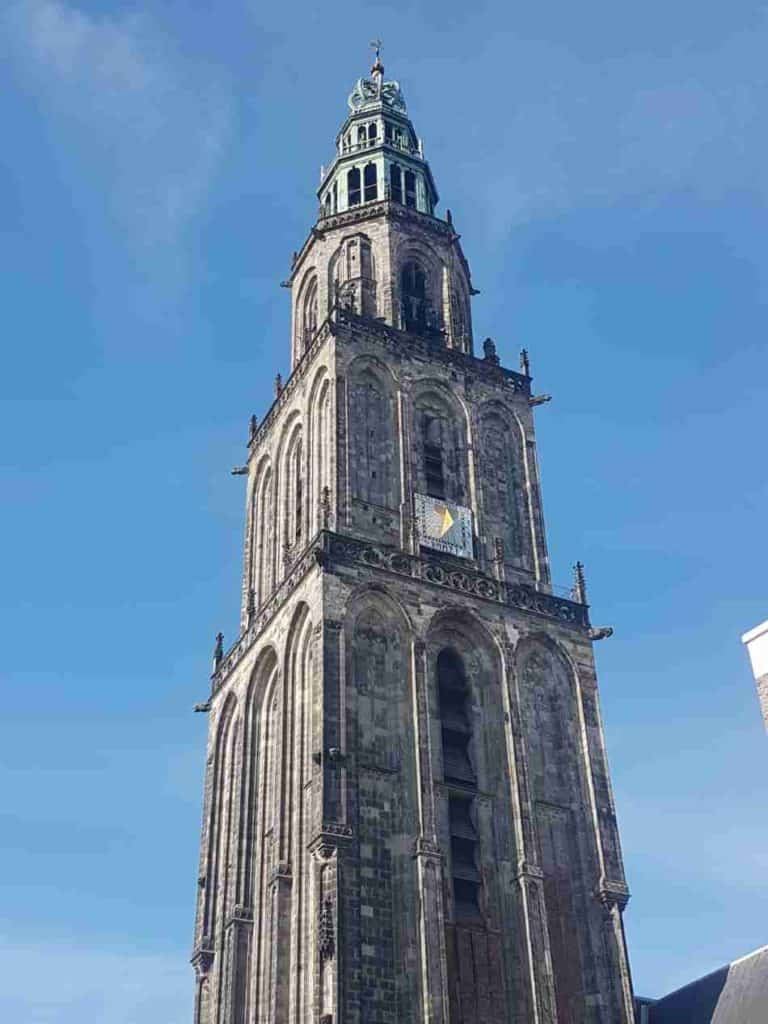
For more than 500 years, the Martini Tower has risen high above Groningen city.
With its 97 meters, the Martinitoren is the highest tower in Groningen and the fourth tallest in the Netherlands.
It is possible to climb the Martini Tower, and you will be rewarded with a breathtaking view of Groningen city and its surroundings. It is the best view of Groningen and the surroundings that you can get.
However, if climbing stairs is not your thing, the Forum (see above) is a good alternative if you are looking for a helicopter view.
Other Interesting Dutch Cities To Visit
Besides Groningen, there are plenty of other quintessential Dutch cities that you could visit to experience a bustling, genuine, authentic Dutch town.

